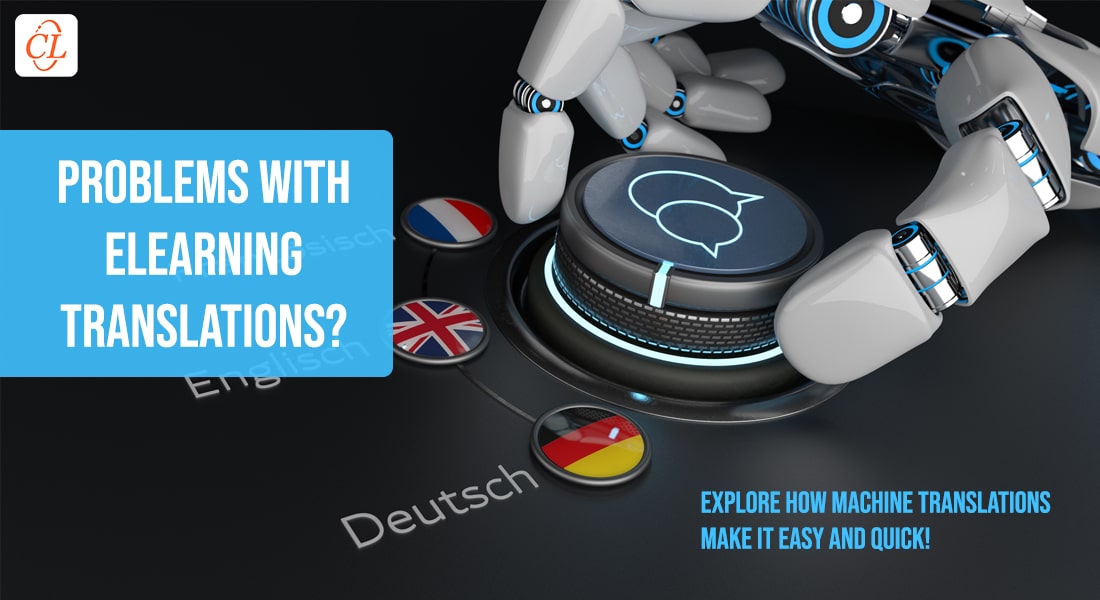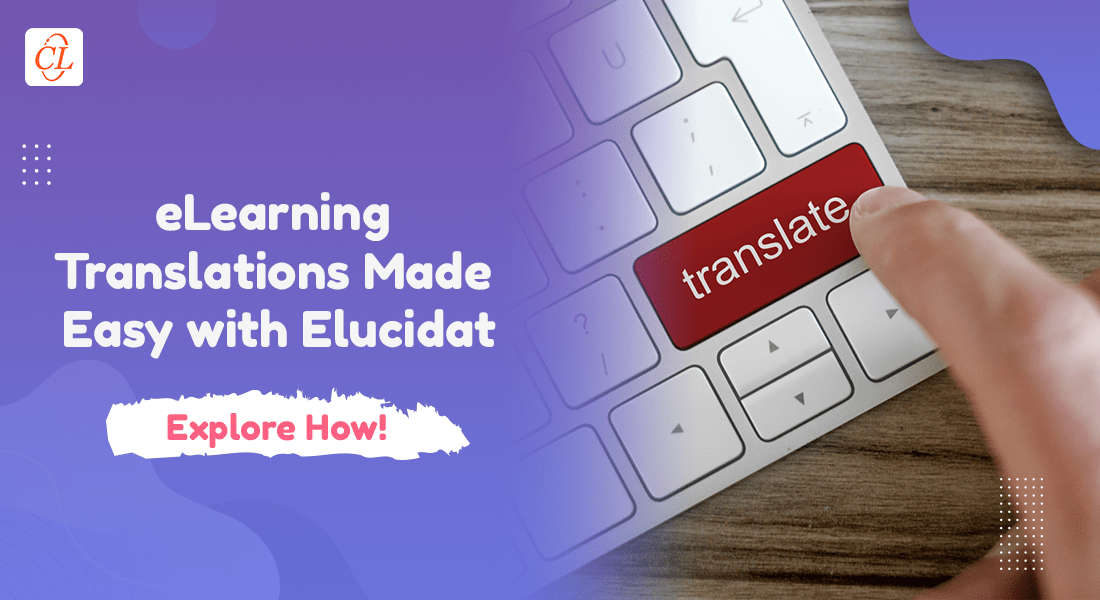所有你需要知道的关于机器的诠释ion for eLearning
The global corporate training dimension needs authoring tools for course optimization and quicker translations. Read about how, with the help of machine translation, your organization can reach its business goals in the least possible time.

Translation studies has been around for a long time considering the massive wave of globalization we’ve been experiencing. However, in the world of rapid eLearning, it is machine translation that has taken the world by storm.
Machine translation first came into being in 1947 but has only become popular now. Warren Weaver, the scientist who introduced statistical machine translation (SMT), believed languages to have an inherent logic, which when deciphered and encoded could be translated with ease.
eLearning developers have a lot to learn from machine translation, and the latter has a long way to go too! Let’s learn everything there is to know about machine translation for eLearning in this blog!
Is Machine Learning the Future of eLearning Translation?
Yes! It is, and for many good reasons too!
With machine translation you:
- Ensure translation accuracy of technical content
- Save time and money otherwise spent on human translation
- Enhance global learning experiences
The Benefits of eLearning Translation
The current mass globalization has pushed corporations to simultaneously train their globally dispersed employees. As the world is getting smaller, you must not ignore your employees’ training. Courses need to be uniform, however, this remains an elusive endeavor. It’s because of the variations caused when a singular course is held in different parts of the globe. This is whereeLearning translationcomes into play.
- Organization-wide Communication:Of course, when a country follows a its own style of training, communication throughout the organization becomes haphazard. Translated courses help bring the entire organization together.
- Employee Engagement:Sure, 840 million people communicate in English across the globe. However, it is not the only language used around the world to conduct business. The cultural sensitivity that translated courses bring is incredibly powerful.
- Future-proof Training:Even if cultural uniformity is not important to your organization, designing multiple courses in several languages can still pull away your resourceeLearning translationsimplifies the process, and all you have to do is translate courses to sustain your training programs.
eLearning Translations – 7 FAQs Answered
Current Challenges of eLearning Translation
That which is designed to perfection must develop a few flaws along the way. This is the case with translation as well. Today, eLearning translation has a few issues. They are:
- Complex Language Structures:Translating the essence of diverse languages is fraught with challenges, especially because of their complex and unique linguistic structures.
- Time-consuming:手动阅读和挂rting words from one language into another is extremely time-consuming. Translators do not come cheap, and they need weeks to translate a single course.
Machine Translation for eLearning is the Answer!
There is a reason that machines are taking over so much space in our lives. They are supersmart and prompt. Machine translation is not difficult since it solves most of the problems that comes with human translation.
- Understanding Language:The complexity of languages doesn’t perturb tools such as Google Translate and Microsoft translator. They simply decipher one language and codes it into another.
- Timesaving:What might take hours for a human translator to determine machine translation tools handle it within minutes. It is the best way to roll-out courses with speed!
- Strong Word Economy:Unlike human translators, machine translation tools know the words, idioms, and complex expressions of every language. These tools quickly analyze unique linguistic nuances before translating for complete accuracy.
Problems With Machine Translation for eLearning
Machine translation is not immune to all the problems your business may face when creatively translating eLearning courses. Here are some of the major issues that machine translation can cause:
- Doesn’t Translate Creative Texts:Sure, machines can translate complex words and idioms. However, they fall short when translating figures of speech and creative content. Machine translation tools cannot understand humor or sarcasm and may translate text to completely lose its essence.
- Translation Doesn’t Fit Into The Design:While this issue is common to translation, its persistent when it comes to machine translation because you have no human control over it. When translating courses from one language to another, machines cannot consider the bigger picture and how different words fit into the overarching aesthetic.
Mitigating the Challenges of Machine Translation
Machine translationis in its infancy, and it still needs to grow a lot. With the increasing popularity of artificial intelligence and machine learning, computer systems are getting smarter each day to make translations more accurate, culturally appropriate, and creative.
The primary tool machine translation uses isrule-based machine translation(RBMT) which helps decode a language and encode it to another one. It works perfectly to help combat the issue of linguistic structures and words. Thephrase-based machine translation(PBMT) model helps in keeping each idiom and expression’s meaning intact.
However, an interesting fact in the industry right now is howneural machine translation(NMT) helps mitigate most problems of machine translation.
NMT builds a neural network of languages to target text that cannot fit into non-specialized systems for culturally relevant translations. It conducts end-to-end translation by mapping the input language and providing output in an accurate manner.
It’s a Wrap!
Machine translation for eLearning may sound like the best way to make sure eLearning is effective. However, it can take years for computers to learn thousands of languages. Even in its infancy, machine translation has overcome current problems faced in eLearning translation.
eLearning translation is the way to go for ensuring most translation issues are solved. So, what are you waiting for? Get your copy of oureBookto learn more about the role that eLearning plays in the emerging corporate training environment.






